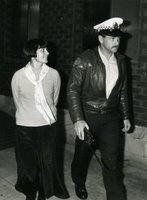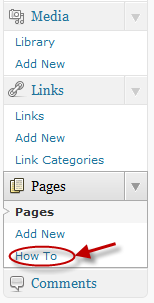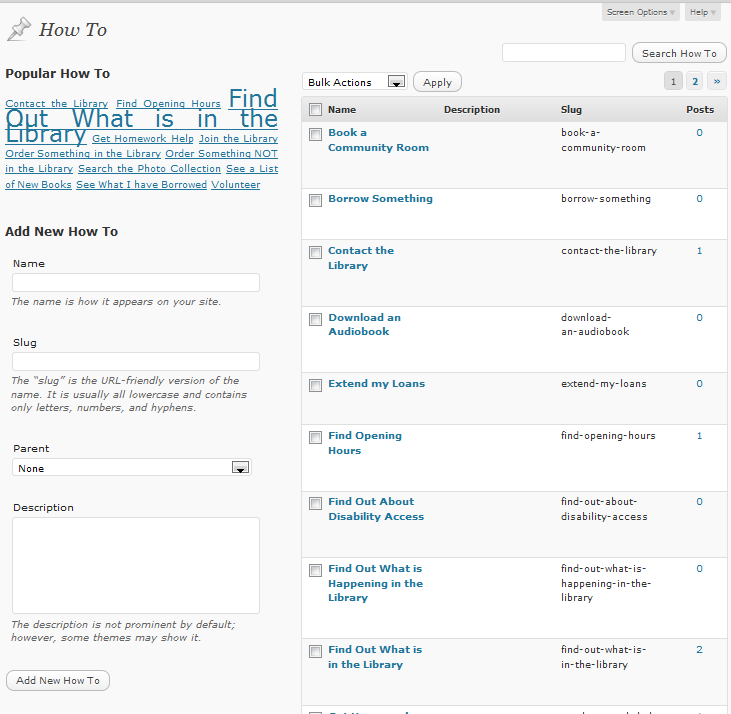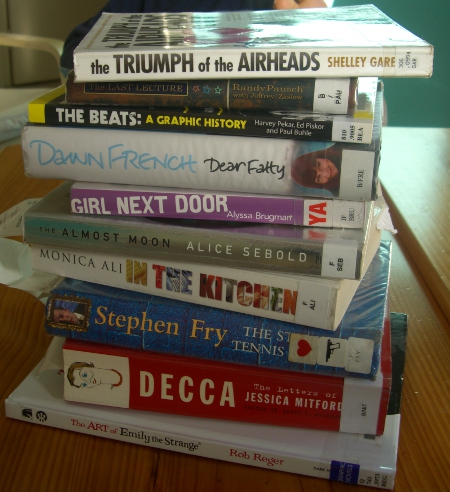For the music industry, Digital Rights Management did not work as a cost-effective, sensible solution to prevent copyright breaches. It frustrated genuine users and did nothing to prevent people determined to pirate music.
Sarah Houghton-Jan (I am a frustrated eBook (non) user), David Lee King (Library eBooks can be Frustrating!) and Kate Davis (advocacy and econtent (i’m also a frustrated ebook user) have all posted today about the difficulties they have as consumers of ebooks from their libraries, and to some extent blamed this on DRM. They cannot easily get the things to work on their devices without a lot of time wasted and…well… frustration. These are people who have been paid by their libraries to know about technologies like ebooks and implement the best services for their users. If they can’t read ebooks on their own devices without a whole lot of kerfuffle, then what hope does the home consumer have?

Source: i can has cheezburger
Paint me purple and call me paranoid if you wish, but I suspect that this lack of easy usage- and not copyright protection- is what is behind strict and ridiculous DRM controls on ebook services available for library subscription. It is not in publishers’ interests for ebooks to be easy to download in libraries. More charitably, there is little incentive for publishers to get this right for the library market. The three bloggers above call for unity and advocacy from libraries to make it easier for us to deliver ebook services to our users. Let’s take this idea to the utopian conclusion for public libraries, and then look at where this leaves publishers.
To me the logical model is for libraries to pool their funds and create a single consortia that purchases and manages access to ebooks (and other eResources while they are at it). Authentication issues could be solved by having a single library card for all users of the system, or – again with consortial funds – adapting a cross-authentication system like Shibboleth so that authentication can happen between disparate local systems and the ebook providers. Let’s not get too giddy, so we’ll just limit this to a state by state effort in Australia (although the national licensing “One Library” model being proposed by the National and State Libraries Australasia looks promising ).
So – now we have probably eight large, cashed-up consortia ready to provide free and user-friendly access to ebooks for library users in Australia. They approach the publishers. What will be in it for the publishers?
Digital content, without a need for physical storage, inventory and delivery, can cut out the middle men and deliver directly from the supplier to consumer. CD stores, video shops, newsagencies, travel agencies – all businesses with models based on being middle men – are folding or morphing out of recognition if they want to survive. With ebooks, wouldn’t the library consortia be offering to take the role as a “middle man”? The iBook store, Amazon’s Whispernet – although without decent content yet – are simple for the user and create direct profit for the publisher, so a library interface would just be complicating the delivery channel, not making it easier for the publisher. If not a role of “middle man”, then is the role that the large library consortia are offering that of competing distribution channel? One where the publisher does not make nearly as much profit per copy consumed?
Isn’t that what we already do with print books? Aren’t libraries undercutting the sales of print books already? Yes. We are. A little more on that later.

Source: i can has cheezburger
What I think we need , if we are going to advocate and work with publishers to create easily accessible ebooks for our users, is reasons why it is in publishers’ interests to provide such a model. This is in a country where publishers argue that they need parallel importation limitations to protect their industry, while much cheaper prices at thebookdepository and Amazon destroy independent booksellers. A country where publishers are not selling ebook versions of print books even to consumers because they are worried about the effect on their profits.
Maybe one of the attractions would be to keep libraries happy because we are clients for print books. I would also argue that libraries create a culture of reading and of consumption of publisher content. Good libraries support their collections with events, tools and staff that promote and encourage the use of that content. Many of our users could not afford to buy ebooks and (libraries would like to think, but it remains to be proven) would only read them if provided by a library.
Libraries can offer a “try before you buy” service, where an ebook borrowed temporarily creates a market for users to buy their own copies of that work or other works by the same author. I find the “digital rental” model of journal subscriptions very challenging – I want my library to own their content outright, not have all back issues disappear when we can no longer afford the subscription…but maybe this is a model that would work for library ebooks. Although there is absolutely no technical reason why an ebook should have a short “loan” period (unlike physical books), or any loan period at all, maybe this is what libraries should ask from publishers. To pay lower rates to provide free short term copies of digital content to our users.
I am not sure that this is enough of an argument to persuade publishers. Apart from altruism, supporting the underprivileged or creating a more robust and democratic society, what arguments do you see to persuade publishers that they should provide affordable ebooks for libraries to lend for free to our users without complicated technical kerfuffle?
This must be post 17 of the 30 posts in 30 days challenge.












